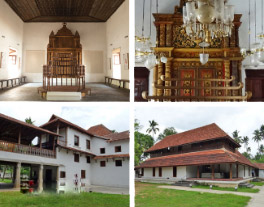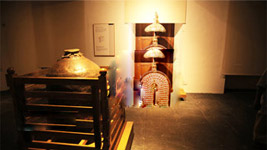Jewish Monuments in Kerala
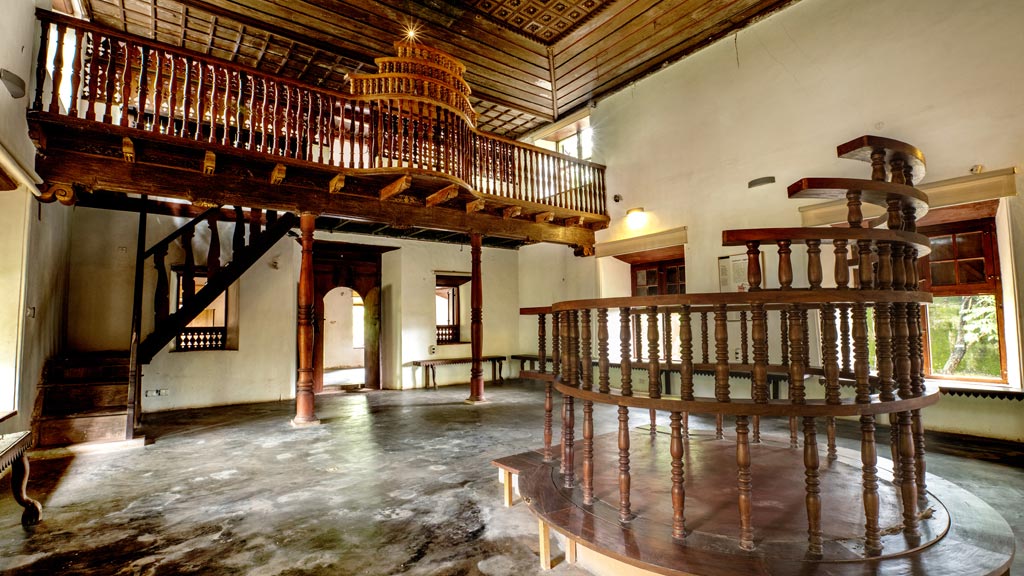
Jews in Muziris
The Muziris Heritage Project gained a newer dimension with its acknowledgement of Jewish culture to the growth of our land, and its preservation of the physical remnants of their rich legacy. Historically, they are considered the oldest Jewish diaspora in India. The first Jews to reach Kerala were traders who came during the time of King Solomon, more than 2,000 years back. As trade relations grew, the Jews could not help noticing the ambience of tolerance in the land.
.jpg)
So it became their haven when they fled from the terrible atmosphere of religious persecution in their own homeland. They landed first at Muziris with their families and founded a settlement. Gradually, the Jews developed into a prosperous business community, with the warm welcome and generous patronage extended by the native rulers. It was not long before they began to enjoy a high and influential position in society. The Jewish community became a force to be reckoned with in the social, economic and political life of Kerala. However, they could hold sway only till the arrival of the Portuguese. When the newcomers persecuted them the Jews were compelled them to leave Kodungallur for Cochin in 1565.
Some of the most tangible and poignant reminders of Jewish settlement in Muziris are to be found in the synagogues where they offered worship and the cemeteries where they reverentially left their dead relatives. The Muziris Heritage Project has left no stone unturned to preserve these relics in order to show the future generations a glimpse of a culture that was once a vibrant power in this land.
The Synagogues
The life of the Jews and their history have an important place in the Muziris Heritage Project. The Jews settled long back in Paravur and Kodungallur regions of Kerala, and the two synagogues, one each at Paravur and Chendamangalam, still exist as a testimony to their glorious past. The Jews who lived in the Muziris Heritage Site area had ardently followed their religious practices, an important part of their worship being reading the Torah aloud in the synagogue.
The Ark of the Covenant
The Jewish Bible called Tanakh contains 24 books. It was written by different authors, and compiled for the first time in the 10th century. The first five books make up the Torah. This collection of books comprising a series of 613 commandments, which are basically God’s instructions to the people of Israel, forms the core of their belief.
The Torah scrolls are kept in the Ark of the Covenant – sacred, ornate, gold-plated wooden chest where the ancient Hebrews kept the two tablets containing the Ten Commandments. The Ark of the Covenant inside the synagogues of the Muziris region was built using wood. In all synagogues, it is a cabinet that sits behind a curtain in the synagogue wall that faces Jerusalem. The Ark of the Covenant is beautifully decorated with engravings and artworks, which are mainly influenced by the artworks of Spain and Italy. The decorated wooden boxes in which the Torah is kept is taken out during religious ceremonies. According to Jewish practices, the Torah is like a decorated bride. There are handles to support the Torah scrolls as it is considered sacred to touch. The holy book of Torah reveals God’s teaching about Himself, His purposes and how His words could help His people in every aspect of life.
Rabbi – The Teacher of the Torah
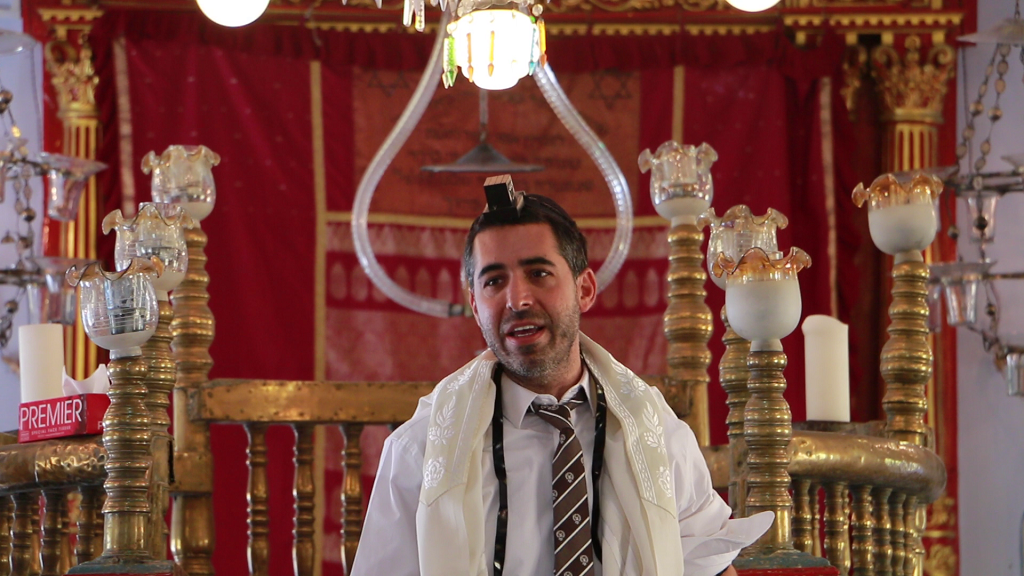
Imparting of spiritual knowledge and transcription of scrolls of the Torah were done by the rabbis. Rabbis were originally teachers, and they devoted themselves to studying the Torah. Spiritual study centres are known as Rabbanim. Such a centre above the gatehouse of Paravur synagogue was a Kerala model of Rabbanim. A collection of writings containing teachings, commentaries on the Hebrew Bible and learned debates is called the Talmud.
Holy Days and Festivals
The Jews who lived in the Muziris region kept their customs and practices alive, and celebrated their festivals with much ardour.
Pesach
Pesach [Passover] festival is one of the main festivals where the primary observance is related to the Exodus from Egypt after 400 years of slavery, as told in the biblical Book of Exodus from chapters 1 to 15. On the festival day of Pesach, the Jews eat only non-fermented food. Men and women work together and prepare the Pesach Appam/ cake.
On Sabbath day (set apart for religious observance and abstinence from work), Jews religiously gather together in the synagogue and read a portion of the Torah. This day is popularly known as ‘Chukkunda Perunnal’ and the 50th perunnal [festival] since this is the 50th day after Pesach.
The Jew calendar begins in autumn with Rosh Hashanah, the Jewish New Year festival. Special morning prayers are offered, thirty days prior to this day, and the Jews never sleep on the day of the festival. Ten days later is the Day of Atonement or Yom Kippur. This is the most solemn event in the Jewish calendar when the Jews spend the whole day praying, fasting and seeking God’s forgiveness.
The Jews in the Muziris region believed that the departed souls wandered around on the day of Yom Kippur. ‘Purium’ Perunnal was another festival celebrated for the remembrance of Princess Esther.
Hanukkah
Hanukkah, also known as the Festival of Lights, is an eight-day long midwinter festival that is marked by the lighting of candles. It celebrates the rededication of the temple of Jerusalem after it was recaptured from the enemies in 164 BCE. Like several other festivals in the Jewish religious year, Hanukkah reminds Jews of God’s love to His people.
During the festival, Jews in the Muziris region used to decorate their houses, streets and synagogues with lights, and also set fire to effigies made of hay and grass. They also danced, sang and distributed sweets during this time. On the first day of Hanukkah festival, Jewish women participated in Kaikottikali, an indigenous form of group dance.
Customs and Traditions
The Sabbath
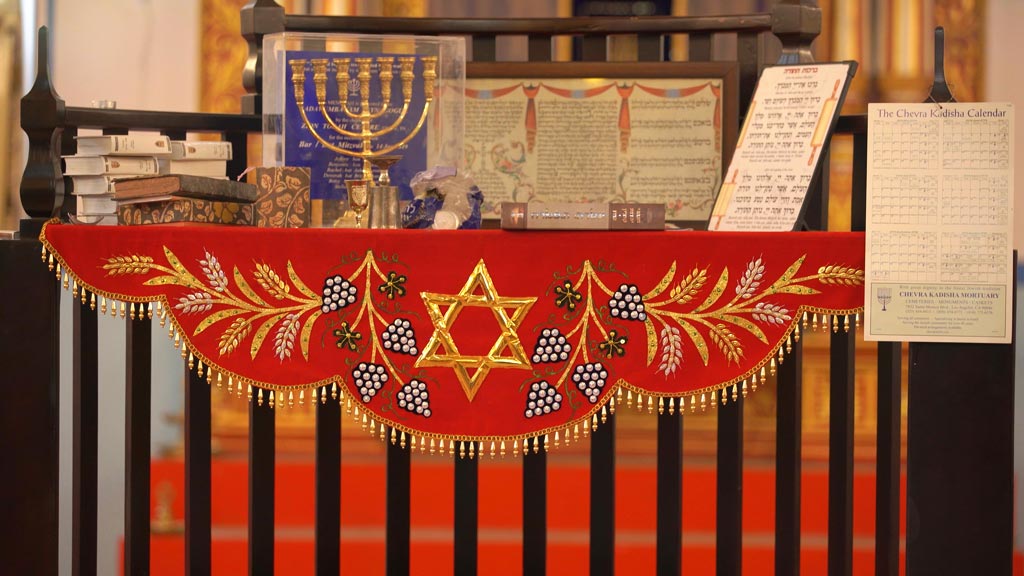
The Jews in the Muziris region of Kerala lived a religiously active life. Sabbath – stretching from Friday evening to Saturday evening – is the weekly day of religious observance and abstinence from work. It is a way of commemorating the way God rested after the creation. The Jews calculate their day from sunset to sunset. On the Sabbath, they dress themselves up in their best clothes, refrain from cooking, work or the use of transport. They offer prayers, study and rest on Sabbath days.
The path in front of the Paravur Synagogue was closed on the Sabbath days. Food on Sabbath day was prepared and eaten after observing religious rites.
The Significance of Lights
Lights are important in the life of Jews in the Muziris. It has a symbolic value that is deeply connected to their rigorous religious practices. Different kinds of lights are used in the Jewish synagogue and houses for religious purposes.
As part of the beginning of Sabbath rites, Jews used to light a wick on a stone font placed in front of their houses.
It was customary for the Jewish women to recite prayers after lighting Chattom vilakku to begin a Sabbath day. Glass lamps became popular among the Jews of the Muziris region after their contact with western culture. Later when electricity came into vogue, the customary rite of lighting the lamp became rare. People also started using candles. Menorah is a nine-branched candlestick used by the Jews in the Muziris area.
Nercha (Votive Offerings)
The word nercha in Malayalam means an offering to God. People belonging to all religious groups in Kerala consider nercha as an important religious activity. So did the Jews who lived in the same geographic region. Nercha was offered on Nehemiah Motha’s Remembrance Day as well. Nehemiah Motha was a Jewish mystic and poet who migrated to Cochin from Yemen. Motha died in 1916 and his grave is considered to be a centre of religious activities.
Manara and Theva
As the Jews in the Muziris region who immigrated to Kerala became an integral part of the state, they adopted many Malayalam words into their language, altering them slightly in the process. Manara is adapted from Manavara in Malayalam, and it is a decorated room for the newly wedded couple. As part of the Jewish festival – Simchat Torah – the Torah box is decorated and is named ‘Manara’. The concept comes from the idea that symbolically the Torah is a beautiful bride.
Silk shawls, with symbols of lions on them, are also used for decoration. The crown in the decoration symbolizes the Torah as the crowning glory of Jewish life. There are some properties used for religious requirements in the synagogues of Muziris. Theva or Theba was used in Jewish synagogues as a pedestal for placing the Holy Book during the time of the spiritual recitation. Another name of Theva is Bema. In the synagogues of the Muziris region, a Theva was placed in the balcony.
Food on Sabbath Days
Except on Sabbath day, the Jews in the Muziris region used to sit on the floor to have food. Food preparations of the Jews were mostly similar to Kerala food where vinegar and tamarind were used in abundance.
On Sabbath days, Appam or cakes prepared with wheat was an important food item. Wine was also prepared on special days. They did not cook on Sabbath days instead they kept certain food items on the hearth. A preparation with a mix of rice, coconut, onion and meat kept on a hot hearth was a special Sabbath food. Kubba was prepared by putting steamed meat inside rice flour. Pasthel was prepared with fried refined wheat filled with meat. Baked stone cake, black gram cake, etc. were also special Sabbath snacks.
Kosher Food of the Jews
The food of the Jews is religiously significant and is known as kosher food which conforms to certain regulations. Special certificates are issued by the religious authorities where the kosher food is sold.
Pesaha appam or cakes were jointly made by all the members of the Jewish family. A cake named Massa was prepared without fermentation and it was carefully done following certain religious practices. Grape wine was prepared locally, kept in jars and used as Pesaha wine. Animals that do not have cloven hooves or chew the cud are forbidden, as are the birds of prey and sea creatures without fins and scales. The animals that the Jews eat must have been slaughtered according to specific rules.
Jewish Women in Muziris
Jewish women in Muziris, were spiritually inclined and well versed in religious texts, spiritual literature and Jewish mythology. Jewish Penpaattukal – female songs – especially mention this. The discovery of Kola – about 50 notebooks containing Jewish songs from Kerala – are historically significant. The Torah was recited throughout 52 weeks, and concluded before the religious festival in the Malayalam month of Kanni [September-October].
‘Home’ and ‘family’ are given much importance in Jewish religion. There are various principles that dictate various aspects of daily life, from waking up in the morning and ritually washing the hands till the time of going back to bed, when benedictions are said, etc.
Jewish Songs
The Jews were a vibrant religious minority living in the Muziris region. They had a very rich collection of songs, especially those that spoke of their religious beliefs and experiences. The songs revealed the divinity of each Jewish community in its spiritual aspects. They also dealt with the relationship between different Jewish communities, their connection with the Kerala society, the importance of synagogues in a Jew’s life, etc.
The songs carried the tone of hymns as they were all songs of praise. Another interesting fact is that details about the construction of synagogues, the builder’s name and his family name were also included in the Jewish religious songs.
The Historical Aspect
The Jewish synagogues in the Muziris Heritage site in Paravur and Chendamangalam were once very lively places, adorned with colours and reverberating with cheerful sounds, as is very evident in their songs. Some Jewish songs also contained bits of important information related to the history of Kerala.
The Paravur synagogue was once attacked by the Portuguese and this is depicted in the Paravur song. Similarly, the Mala song speaks about the history of the Mala synagogue. The synagogue was constructed as per the commands of the King of Kodungallur, who wished to have people from all communities living in harmony, under his reign.
Women’s Songs
The Jews who lived in the Muziris region could very easily assimilate themselves with the life and culture of Kerala. They learned Malayalam, adopted cultural signs of Kerala and also, very interestingly, wrote and sang Malayalam songs. Special songs meant for or by Jewish women known as Penpaattukal candidly reveal details about the dress, ornaments and also character of Jewish women.
Jewish women’s songs mention two different sections of the Jewish community in the Mattancherry region of Kerala. Jewish women used to loudly recite the songs in the synagogues of Kerala when in many parts of the world, loud female voices inside the synagogues were tolerated. Vidyarambham – the initiation into the world of letters – is a sacred ceremony that has been in existence in Kerala society since time immemorial. The Jewish community adopted this holy ceremony, customizing it to suit their beliefs, and this practice is very beautifully depicted in their songs.
Wedding Songs
Although the Jews in the Muziris region adopted certain cultural aspects of Kerala, they still cherished their own customs and beliefs and these are revealed in their songs. An important element of Jewish songs is their wedding songs. A collection of these songs was published in 2005 under the title Kaarkushali, compiled by Dr Scaria Zacharia.
There are Thaali (mangalsutra) songs, which make it evident that the Kerala concept of thaali was adopted among Jews in their weddings. While the bride and groom entered the synagogue, the Hebrew songs in Shingli tune were sung.
Prayers held in Jewish synagogues of Kerala were also unique. The songs were sung in Hebrew and the tune set for the prayer was Shingli which was based purely in the Kerala style of music.
Jews as Religious Singers
Researchers and writers who have studied Jewish life in Cochin suggest that apart from the many religious texts and prayers the Jews used, their communities also produced many religious singers. They created their own unique songs, prayers, and composed hundreds of Hebrew songs to be sung on festive occasions. Mostly these were sung during the service in the synagogue, at the end of their prayers or in their houses. The writings of the community, known as Kollas, were collected from the Cochin Jews and published under the title Book of Songs and Praises. This book was used by members of the Ernakulam, Chendamangalam and Mala communities.
Peculiarities of Jewish Songs
The songs of the Jews contain descriptions of memories of the past, events in the present and hopes about the future. Noteworthy among them are the two Kili or parrot songs, both of which have the same event as their plot. The first parrot song tells the story of the Jews who lived in Kodungallur, where ‘they sat like birds in a row in a golden forest’. The second song narrates the story of their persecution, migration and their final settlement in their new home, the coast of Paravur in Kerala.
Much of Kerala’s culture and landscape have found expression in their songs. The songs indicate that the Jews lost their families on the way as they went searching for a new settlement in a foreign land.
The Jewish Cemetery
The synagogues in the Muziris region of Kerala had cemeteries associated with them.
.jpg)
According to Jewish belief, the graves should be protected, as the dead rest in the cemetery till the resurrection day. Therefore the Jews decorated the coffins with silk spreads. Their concern over the departed souls are described in the Jewish songs as well.
